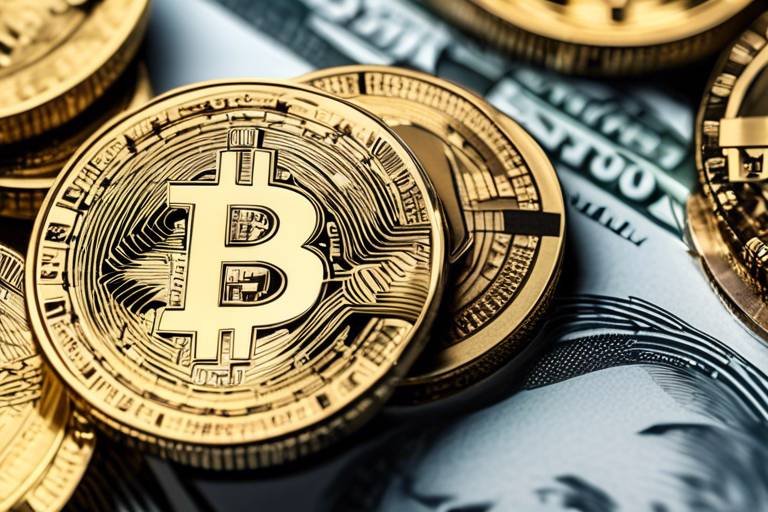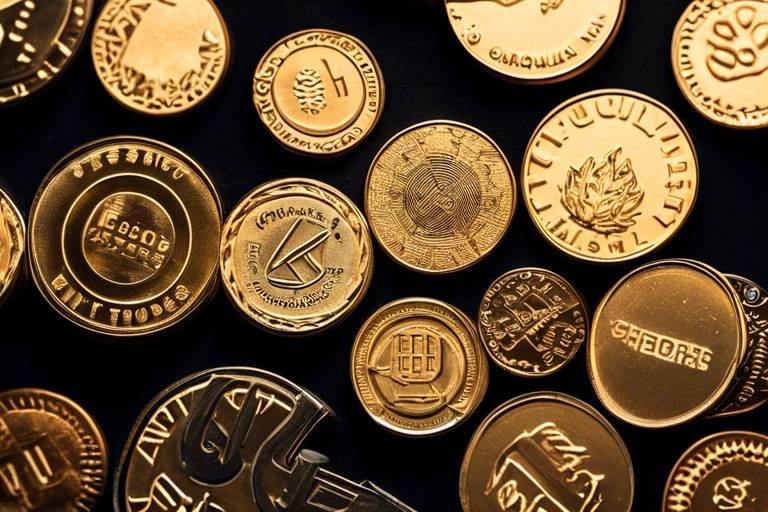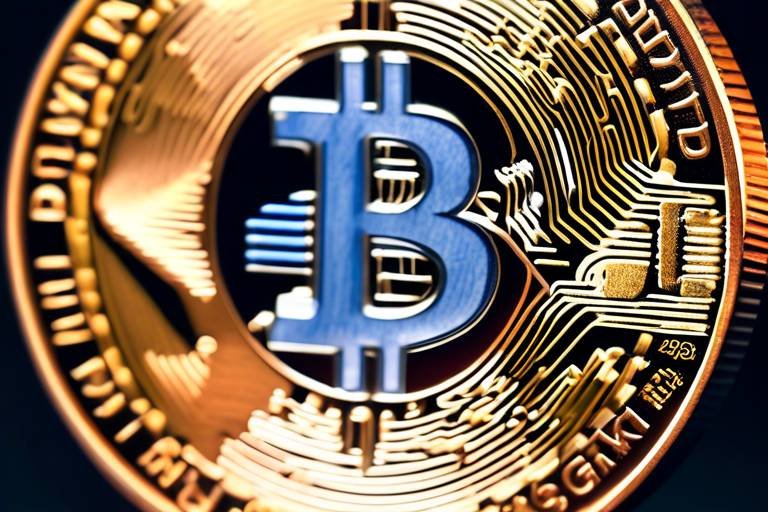Evaluating the Performance of Major Crypto Exchanges
In the fast-paced world of cryptocurrency, choosing the right exchange can feel like navigating a minefield. With hundreds of platforms available, each boasting unique features and benefits, it’s essential to evaluate their performance thoroughly. This article dives deep into the key metrics that define the leading cryptocurrency exchanges, examining aspects such as market liquidity, security measures, and user experience. By the end of this exploration, you will be equipped with the knowledge to make informed decisions, whether you're a seasoned trader or a curious newcomer.
Market liquidity is the lifeblood of any trading platform. It refers to how easily assets can be bought or sold without causing significant price fluctuations. High liquidity means you can enter or exit trades with minimal slippage, which is crucial for maximizing profits. On the other hand, low liquidity can lead to frustrating delays and unexpected losses. Major exchanges like Binance, Coinbase, and Kraken exhibit varying levels of liquidity, influenced by their trading volumes and user bases. For instance, Binance often leads the pack with its extensive trading pairs and high daily volumes, making it a preferred choice for many traders. Understanding how liquidity varies among these platforms can significantly impact your trading efficiency and overall experience.
When it comes to cryptocurrency, security is not just a feature; it’s a necessity. With the rise in cyber threats and hacking attempts, the integrity of your funds is paramount. Major exchanges implement a range of security protocols to safeguard user assets and personal data. From encryption technologies to regular security audits, each exchange has its own set of measures. For instance, some platforms utilize multi-signature wallets, requiring multiple approvals for transactions, while others focus on real-time monitoring of suspicious activities. The robustness of these security measures can make all the difference in protecting your investments.
One of the most effective ways to enhance security is through two-factor authentication (2FA). This process adds an extra layer of protection by requiring users to provide two forms of identification before accessing their accounts. Most exchanges offer 2FA options, which can include SMS codes, email confirmations, or authenticator apps. The importance of 2FA cannot be overstated; it acts as a formidable barrier against unauthorized access. While setting up 2FA might seem like an extra step, it is a small price to pay for the peace of mind it brings.
Another aspect to consider is withdrawal limits. Many exchanges impose daily or monthly limits on how much you can withdraw, which can significantly affect your access to funds. While these limits are often put in place as a security measure to prevent fraud, they can also be a source of frustration for active traders. Understanding the withdrawal policies of your chosen exchange is crucial, especially if you plan to make frequent transactions. Always check the limits and ensure they align with your trading strategy.
Some exchanges go a step further by offering insurance policies for user funds, which can enhance trust and confidence. These policies typically cover losses due to hacking or system failures, providing a safety net for traders. While not all platforms offer this feature, those that do often highlight it as a major selling point. It’s worth investigating which exchanges provide insurance and under what conditions, as this can be a deciding factor in your choice of trading platform.
Cold storage is another critical aspect of security. This refers to the practice of keeping the majority of user funds offline, away from the reach of hackers. Major exchanges implement various cold storage solutions, often using hardware wallets or secure vaults to protect digital assets. The effectiveness of these practices can vary, so it’s essential to research how each platform manages its cold storage and what percentage of assets are kept offline. A robust cold storage strategy can significantly reduce the risk of hacks and theft.
User experience is a vital component of any trading platform. A well-designed interface can make trading more enjoyable and efficient, while a clunky one can lead to mistakes and frustration. When evaluating exchanges, consider factors such as interface design, navigation ease, and the overall user journey. Are the charts easy to read? Is it simple to place trades? These elements can greatly impact your trading experience.
With the surge in mobile trading, the functionality of mobile apps has become increasingly important. Many major exchanges offer dedicated apps that allow users to trade on the go. When assessing these apps, look for features such as real-time market data, easy navigation, and quick execution of trades. A seamless mobile experience can be a game-changer, especially for those who prefer to manage their investments from their smartphones.
Lastly, effective customer support is crucial for user satisfaction. No matter how user-friendly a platform is, issues can arise, and having reliable support can make all the difference. Evaluate the support services offered by exchanges, including response times and available channels (like live chat, email, and phone support). A responsive support team can enhance your overall experience and provide reassurance when you need assistance.
- What should I consider when choosing a crypto exchange? Look for factors like liquidity, security measures, user experience, and customer support.
- Is two-factor authentication necessary? Yes, it adds an essential layer of security to your account.
- What are withdrawal limits? These are restrictions set by exchanges on how much you can withdraw within a specific time frame.
- Do all exchanges offer insurance for user funds? No, not all exchanges provide insurance, so it’s important to check before signing up.
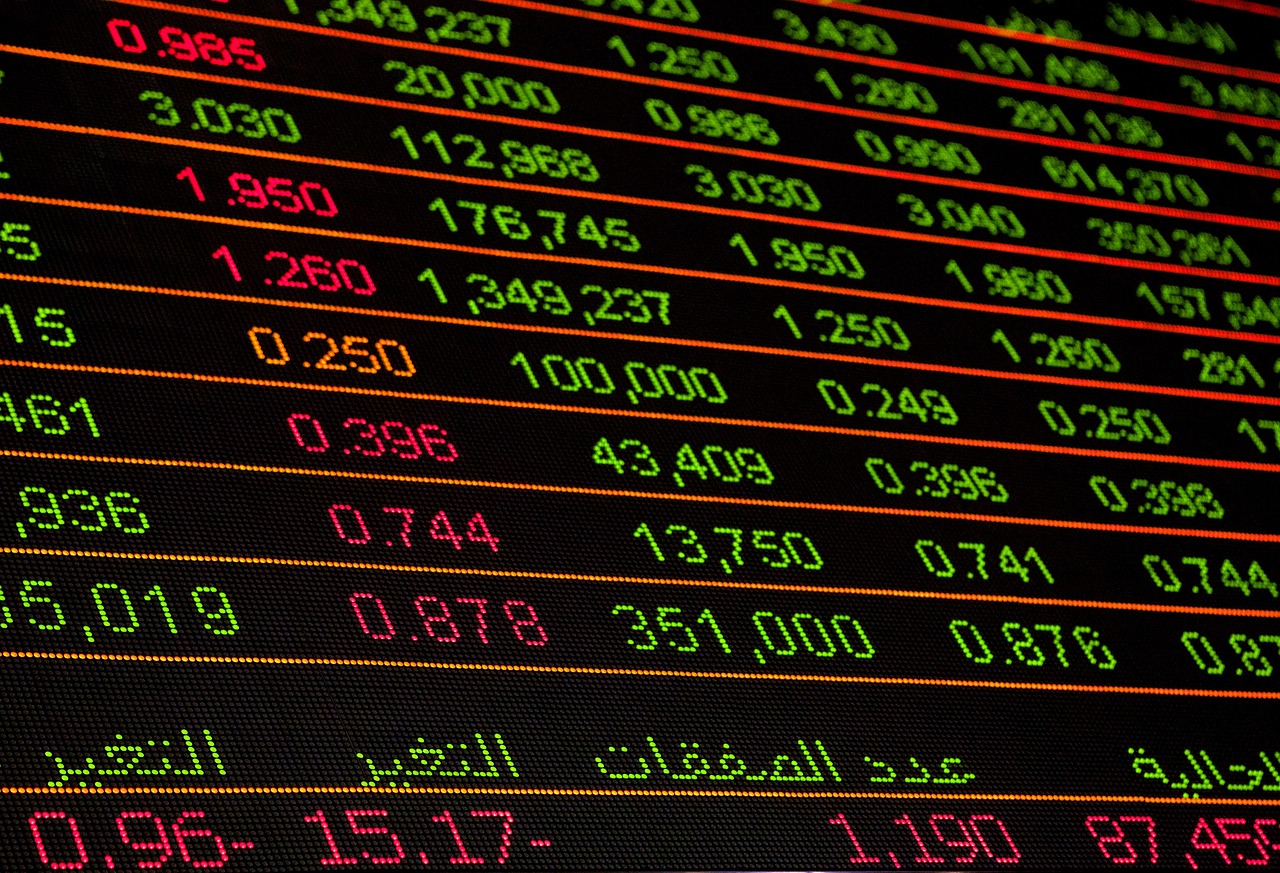
Market Liquidity
is a vital component in the world of cryptocurrency trading. It refers to the ability to buy or sell assets without causing a significant change in their price. In simpler terms, think of liquidity as the ease with which you can jump in and out of a pool of assets. The deeper the pool, the easier it is to make a splash without creating waves. This is especially important for traders who need to execute trades quickly and efficiently. So, how does liquidity vary among major exchanges, and why should it matter to you?
When evaluating liquidity, it's essential to consider several key factors. First, the trading volume of an exchange plays a significant role. Higher trading volumes typically indicate a more liquid market, allowing for quicker transactions at stable prices. For instance, exchanges like Binance and Coinbase often report substantial trading volumes, making them attractive options for traders looking to minimize slippage—the difference between the expected price of a trade and the actual price.
Another factor to consider is the number of trading pairs available on an exchange. More trading pairs mean more opportunities to trade, which can enhance liquidity. If an exchange offers a broad range of cryptocurrencies, it’s likely to attract more traders, thus increasing overall market activity. Here’s a quick comparison of liquidity across some of the top exchanges:
| Exchange | Average Daily Trading Volume | Number of Trading Pairs | Liquidity Score |
|---|---|---|---|
| Binance | $2.5 Billion | 500+ | High |
| Coinbase | $1.5 Billion | 100+ | Moderate |
| Kraken | $800 Million | 200+ | Moderate |
| Bitfinex | $600 Million | 300+ | Moderate |
As you can see from the table, Binance leads the pack with a staggering daily trading volume and an extensive selection of trading pairs. This level of liquidity allows traders to execute large orders without significantly impacting the market price, which is a crucial factor for anyone looking to make substantial investments.
However, it's not just about the numbers. Market depth also plays a critical role in liquidity. Market depth refers to the market's ability to sustain relatively large market orders without impacting the price of the asset. A deeper market means that there are enough buy and sell orders at various price levels, which helps maintain price stability. Traders often look at the order book to gauge market depth before executing their trades.
In conclusion, understanding market liquidity is essential for anyone involved in cryptocurrency trading. It affects your trading experience and can significantly impact your profitability. By choosing a platform with high liquidity, you can ensure that your trades are executed swiftly and at predictable prices. So, the next time you’re considering where to trade, remember to dive deep into the liquidity pool!

Security Measures
In the world of cryptocurrency, security is not just a feature; it's a necessity. With the increasing number of hacks and scams, traders and investors are rightfully concerned about the safety of their assets. Major crypto exchanges have recognized this need and have implemented a variety of security measures to protect their users. So, what exactly do these measures entail? Let's dive into the details.
First off, one of the most common security protocols is Two-Factor Authentication (2FA). This simple yet effective method requires users to provide two forms of identification before accessing their accounts. Think of it as having a double lock on your front door. Even if someone manages to get your password, they still need that second key to enter. Different exchanges have different implementations of 2FA, ranging from SMS codes to authenticator apps, adding an extra layer of protection.
Why is 2FA so important? Well, it significantly reduces the risk of unauthorized access. Imagine you left your front door ajar; it only takes a moment for someone to slip inside. But with 2FA, even if that door is slightly open, the intruder still faces another barrier. Many users appreciate this added security, as it gives them peace of mind when trading. However, not all exchanges employ the same level of 2FA, so it’s essential to choose a platform that prioritizes this feature.
Another crucial aspect of security involves withdrawal limits. Exchanges often set daily or weekly withdrawal caps to minimize the impact of a potential breach. Think of it as a safety net; even if a hacker gains access to an account, they can only withdraw a limited amount of funds within a certain timeframe. This strategy helps to protect users’ assets, but it can also be a double-edged sword. Traders need to balance their need for access with the security that these limits provide. Understanding how each exchange sets and adjusts these limits can be pivotal for effective trading.
Some exchanges go a step further by offering insurance policies for user funds. This means that in the unfortunate event of a hack, users may be compensated for their lost assets. It’s like having an insurance policy for your car; if something goes wrong, you have a safety net. However, not all exchanges offer this service, and the specifics can vary widely. Always check the terms and conditions of an exchange to see if they provide this invaluable feature.
Lastly, let’s talk about cold storage solutions. Cold storage refers to keeping the majority of user funds offline, away from the prying eyes of hackers. It’s akin to storing your valuables in a safe rather than leaving them out in the open. Most reputable exchanges utilize cold storage to protect their users' assets, ensuring that even if their online systems are compromised, the bulk of the funds remain secure. This method is widely regarded as one of the most effective ways to safeguard digital assets, and understanding how an exchange implements cold storage can help users make informed decisions.
In conclusion, the security measures employed by cryptocurrency exchanges are vital for protecting users' assets and maintaining trust in the platform. From two-factor authentication to cold storage solutions, these protocols are designed to provide peace of mind in a volatile market. As a trader or investor, it’s essential to evaluate these security features before committing to an exchange. After all, when it comes to your hard-earned money, it’s better to be safe than sorry!
- What is Two-Factor Authentication?
Two-Factor Authentication (2FA) is a security measure that requires users to provide two forms of identification before accessing their accounts, typically a password and a code sent to their mobile device.
- Why are withdrawal limits important?
Withdrawal limits help minimize the potential loss in case of unauthorized access to an account, ensuring that only a limited amount can be withdrawn within a specific timeframe.
- Do all exchanges offer insurance for user funds?
No, not all exchanges provide insurance policies for user funds. It’s essential to check the terms and conditions of each exchange to understand their policies.
- What is cold storage?
Cold storage refers to keeping the majority of user funds offline, making them less vulnerable to hacking attempts.
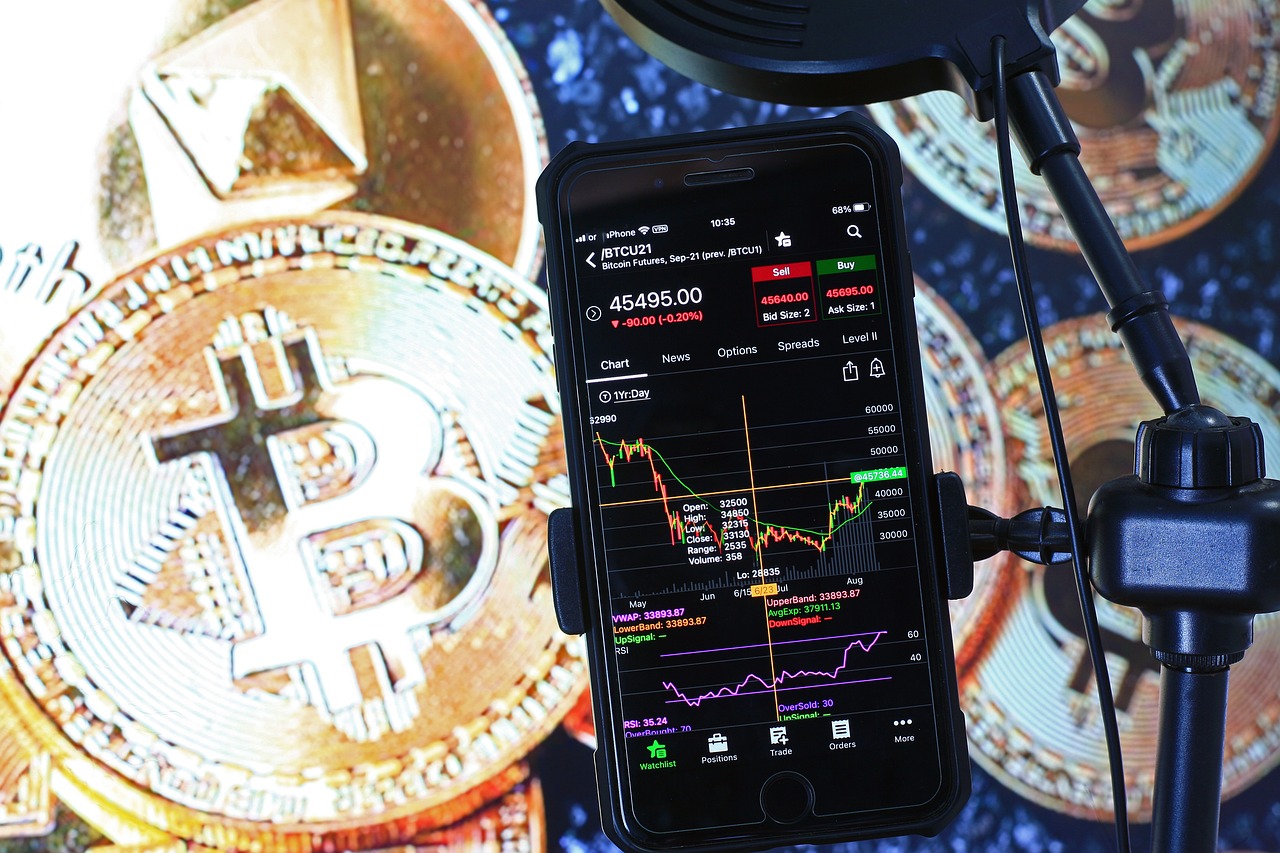
Two-Factor Authentication
In the rapidly evolving world of cryptocurrency, security is not just a feature; it’s a necessity. One of the most effective ways to bolster account security is through Two-Factor Authentication (2FA). This method adds an extra layer of protection, making it significantly harder for unauthorized users to gain access to your account. Think of it like having a double lock on your front door; even if someone has the key (your password), they still need that second lock (the 2FA code) to get in.
So, how does 2FA work? When you try to log into your account, after entering your password, you’ll be prompted to enter a code sent to your mobile device or generated by an authentication app. This means that even if someone manages to steal your password, they would still need access to your phone or the authentication app to log in. It's a simple yet powerful step that can drastically reduce the risk of account breaches.
Different exchanges implement 2FA in various ways, and understanding these differences can help you choose a platform that prioritizes your security. For instance, some exchanges use SMS for sending 2FA codes, while others recommend using authenticator apps like Google Authenticator or Authy. The latter is generally considered more secure because SMS can be intercepted. Here’s a quick comparison of how major exchanges handle 2FA:
| Exchange | 2FA Method | Notes |
|---|---|---|
| Exchange A | SMS & Authenticator App | Offers both options, but recommends the app for better security. |
| Exchange B | Authenticator App Only | Does not support SMS for security reasons. |
| Exchange C | SMS Only | Less secure; users are encouraged to switch to an app. |
Implementing 2FA is a straightforward process, but it’s essential to ensure you choose the right method that fits your lifestyle. If you’re often on the move, using an authenticator app might be more convenient than waiting for an SMS. Moreover, some platforms even allow you to set up backup codes, which can be a lifesaver if you lose access to your primary 2FA method.
In conclusion, while no security measure is foolproof, enabling Two-Factor Authentication is a critical step in safeguarding your cryptocurrency investments. By taking this additional precaution, you’re not just protecting your assets; you’re also fostering a sense of security in your trading experience. After all, peace of mind is priceless in the volatile world of crypto!
- What is Two-Factor Authentication?
Two-Factor Authentication (2FA) is a security process that requires two different forms of identification before granting access to an account. - Why should I use 2FA?
Using 2FA greatly enhances the security of your account by requiring not just your password but also a second verification method. - What happens if I lose my phone with 2FA?
Most exchanges provide backup codes or alternative recovery methods to regain access to your account.
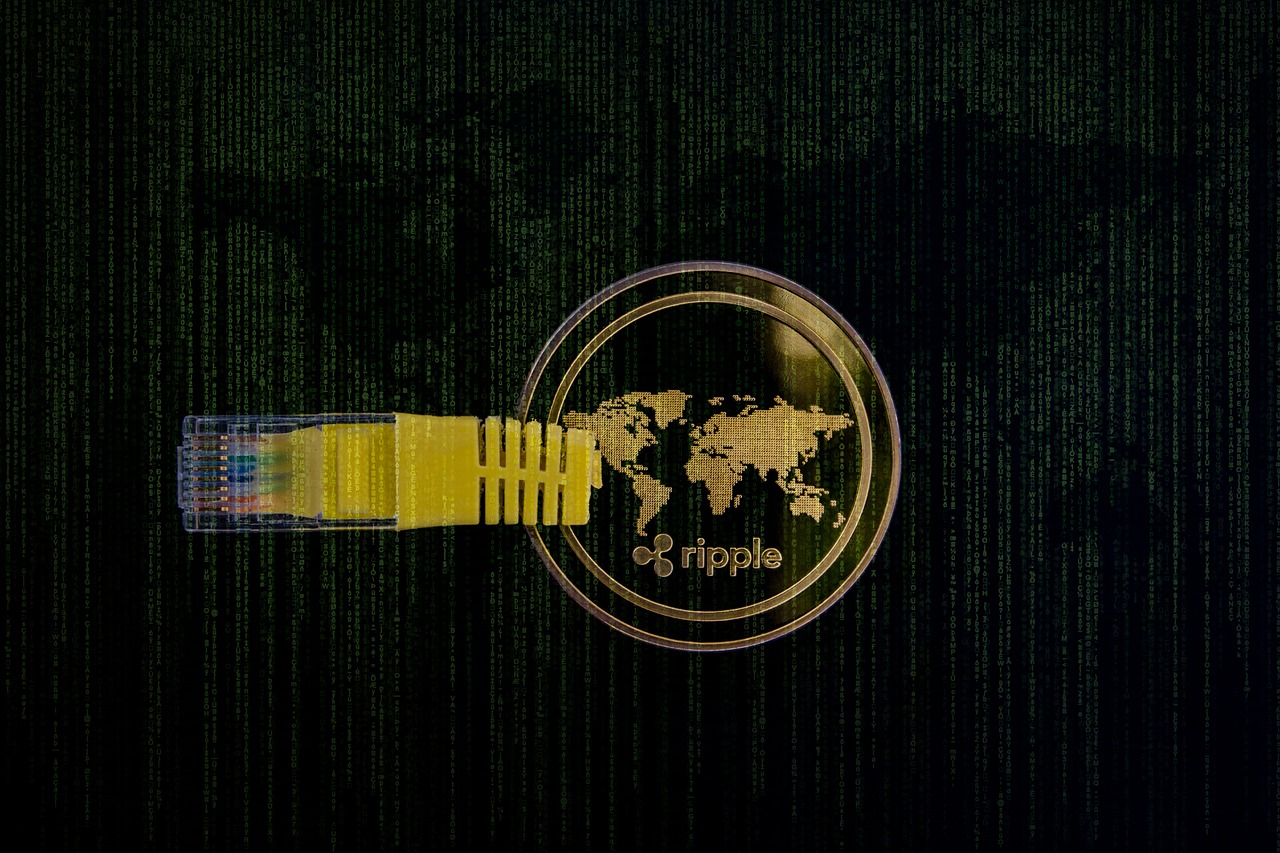
Withdrawal Limits
When it comes to trading on cryptocurrency exchanges, are a significant aspect that can impact user experience and trading strategies. These limits are essentially the maximum amount of cryptocurrency or fiat currency that users can withdraw from their accounts within a specific timeframe. Understanding these limits is crucial for traders who need quick access to their funds, especially in a volatile market where timing can mean the difference between profit and loss.
Different exchanges have varying policies regarding withdrawal limits, often influenced by factors such as account verification levels, user location, and the specific cryptocurrency being traded. For instance, some exchanges may allow higher withdrawal limits for verified users, while others may impose stricter limits on accounts that are not fully verified. This tiered system is designed to enhance security and comply with regulatory requirements, but it can also lead to frustration for users who need immediate access to their funds.
To give you a clearer picture, here’s a comparison of withdrawal limits from a few major exchanges:
| Exchange | Verified Account Withdrawal Limit (24h) | Unverified Account Withdrawal Limit (24h) |
|---|---|---|
| Exchange A | $50,000 | $2,000 |
| Exchange B | $100,000 | $500 |
| Exchange C | $20,000 | $1,000 |
As you can see from the table, the differences in withdrawal limits can be quite significant, which is why it’s essential for traders to choose an exchange that aligns with their trading needs. If you’re someone who frequently makes large transactions, opting for an exchange with higher withdrawal limits is advisable. On the flip side, if you’re just starting out or trading in smaller amounts, the limits might not be as critical.
Moreover, it’s important to consider how these limits can affect your trading strategy. For example, if you plan on making a significant investment and your exchange has a low withdrawal limit, you might find yourself in a bind when trying to access your funds quickly. Hence, always check the withdrawal policies before committing to a platform.
In summary, while withdrawal limits are a necessary security measure, they can also pose challenges for traders. Being aware of these limits and choosing the right exchange can help you navigate the crypto landscape more effectively. Remember, in the fast-paced world of cryptocurrency, having quick access to your funds can be just as important as having a robust trading strategy.
- What are withdrawal limits? Withdrawal limits are the maximum amounts of funds you can take out of your exchange account within a certain period.
- Why do exchanges have withdrawal limits? These limits are in place to enhance security and comply with regulatory standards.
- Can I increase my withdrawal limits? Yes, many exchanges allow you to increase your limits by completing additional verification steps.
- What happens if I exceed my withdrawal limit? If you exceed your limit, you will need to wait until the next period to withdraw more funds.
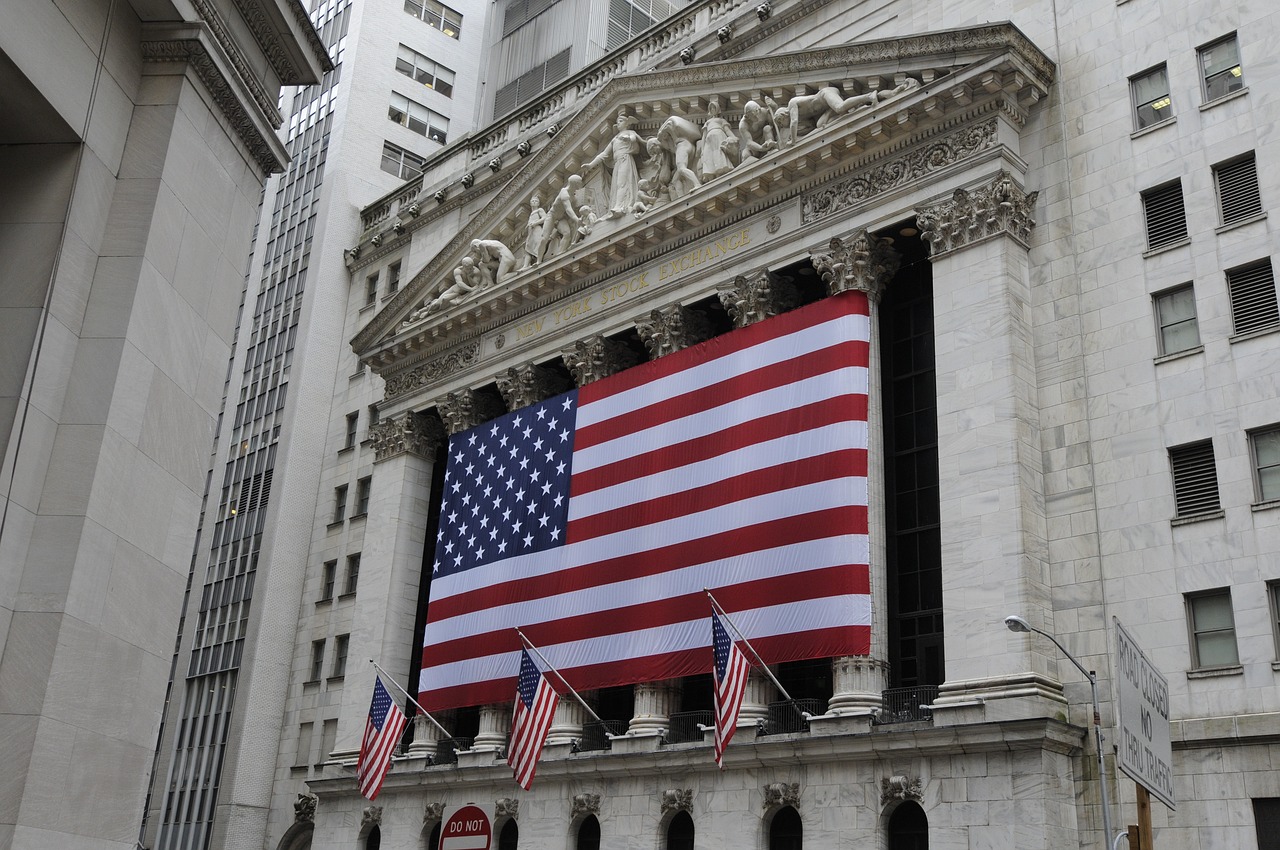
Insurance Policies
In the unpredictable world of cryptocurrency trading, where market fluctuations can be as wild as a roller coaster ride, having a safety net is crucial. This is where come into play. Some cryptocurrency exchanges recognize the inherent risks involved in trading and have taken proactive steps to protect their users' assets through various insurance measures. But how do these policies work, and which platforms offer them?
Insurance policies typically cover losses incurred from hacks or security breaches, providing users with a sense of security that their investments are somewhat safeguarded. For instance, exchanges like Coinbase and Binance have implemented insurance policies that cover a portion of user funds in the event of a catastrophic incident. These policies can vary widely from one exchange to another, both in terms of coverage limits and the types of threats they address.
When considering an exchange, it's vital for traders to examine the specifics of the insurance offered. Here are some key aspects to look for:
- Coverage Amount: What is the maximum amount covered under the insurance policy? This can vary greatly, with some exchanges offering millions in coverage while others may provide limited protection.
- Type of Coverage: Does the insurance cover only external hacks, or does it also include internal fraud and operational errors? Understanding the scope of coverage is essential.
- Claim Process: How straightforward is the process for claiming insurance? A complicated claim process can deter users from feeling secure.
Moreover, the presence of an insurance policy can significantly enhance user trust and confidence in a platform. Knowing that an exchange has measures in place to protect their assets can make traders feel more comfortable engaging in larger transactions. However, it’s important to note that insurance is not a substitute for robust security measures; it should be viewed as an additional layer of protection.
In summary, while insurance policies are an excellent feature for crypto exchanges to offer, they should not be the sole factor in selecting a trading platform. Traders should also consider the overall security architecture, user experience, and liquidity of the exchange. As the crypto landscape continues to evolve, the importance of such safety nets will likely grow, making it essential for investors to stay informed about the insurance options available to them.
1. What is the purpose of insurance policies on cryptocurrency exchanges?
Insurance policies are designed to protect users' assets in the event of hacks, breaches, or other security incidents, providing a safety net for traders.
2. Do all exchanges offer insurance policies?
No, not all exchanges provide insurance policies. It's important to research and choose an exchange that offers this feature if you prioritize security.
3. How can I find out the specifics of an exchange's insurance policy?
You can usually find detailed information about an exchange's insurance policy in their terms of service or security section on their website.
4. Is insurance a guarantee that my funds are safe?
While insurance policies provide an additional layer of protection, they do not guarantee complete safety. It's crucial to consider other security measures in place.

Cold Storage Solutions
This article explores the key metrics, features, and user experiences of leading cryptocurrency exchanges, providing insights into their performance and reliability for traders and investors alike.
Market liquidity is crucial for traders, affecting the ease of buying or selling assets. This section examines how liquidity varies among major exchanges and its impact on trading efficiency.
Security is a top priority for crypto exchanges. Here, we analyze the various security protocols implemented by major exchanges to protect users' assets and data from potential threats.
Two-factor authentication (2FA) adds an extra layer of security. We discuss its importance and how different exchanges implement 2FA to safeguard user accounts.
Withdrawal limits can affect user access to funds. This subsection explores how exchanges set these limits and their implications for traders.
Some exchanges offer insurance policies for user funds. We investigate which platforms provide this service and how it enhances user trust.
In the world of cryptocurrency, are akin to a bank vault for your digital assets. These methods are designed to keep your coins safe from potential hacks and cyber threats. Unlike hot wallets, which are connected to the internet and more vulnerable to attacks, cold storage options are offline, providing an extra layer of security. Major exchanges implement various cold storage strategies to ensure that a significant portion of their users' assets remain protected. For instance, many exchanges store up to 95% of their assets in cold storage, minimizing the risk of loss due to online breaches.
One common method of cold storage is the use of hardware wallets. These are physical devices that store your private keys offline. They are often considered one of the safest options for storing cryptocurrencies. Another method involves paper wallets, where private keys are printed on paper, allowing users to store their assets completely offline. While this method is secure, it does come with risks, such as losing the paper or having it damaged.
To give you a clearer picture of how different exchanges handle cold storage, here’s a table summarizing their approaches:
| Exchange | Cold Storage Percentage | Storage Method |
|---|---|---|
| Exchange A | 95% | Hardware Wallets |
| Exchange B | 90% | Paper Wallets |
| Exchange C | 97% | Multi-signature Wallets |
It's essential to recognize that while cold storage significantly enhances security, it is not foolproof. Users must also take personal responsibility for their assets by using strong passwords and enabling security features like two-factor authentication. Ultimately, the combination of exchange-level cold storage and user-level security practices can create a robust defense against the ever-evolving landscape of cyber threats.
User experience plays a significant role in exchange performance. We evaluate the usability of platforms, focusing on interface design, navigation, and customer support.
With the rise of mobile trading, app functionality is vital. We assess the mobile applications of major exchanges and their features for on-the-go trading.
Effective customer support can enhance user satisfaction. This subsection reviews the support services offered by exchanges, including response times and available channels.
- What is cold storage in cryptocurrency?
Cold storage refers to keeping a cryptocurrency wallet offline to protect it from hacks and unauthorized access. - How safe is cold storage?
Cold storage is considered one of the safest methods for storing cryptocurrencies, as it is not connected to the internet. - Can I access my funds in cold storage easily?
While cold storage is secure, accessing funds may take longer compared to hot wallets, as it requires a physical device or printed keys.

User Experience
User experience (UX) is a critical element that can make or break a trader's journey on a cryptocurrency exchange. Imagine walking into a store where everything is disorganized; you’d probably leave without making a purchase, right? The same principle applies to crypto exchanges. A well-designed platform can enhance efficiency, while a clunky interface can lead to frustration and missed trading opportunities. Therefore, it’s essential to evaluate how major exchanges cater to their users, especially regarding interface design, navigation, and customer support.
When we talk about interface design, we're referring to the visual layout and functionality of the platform. A clean, intuitive design can significantly improve a trader's experience. For instance, some exchanges utilize vibrant colors and easy-to-read fonts, making it simple for users to track their investments. Others, however, may have a cluttered interface that overwhelms new users. The best exchanges often employ user feedback to continuously enhance their platforms, ensuring they meet the needs of both novice and experienced traders.
Navigation is another vital aspect of user experience. Traders need to access various features quickly and efficiently. A well-structured menu system that categorizes different trading options, account settings, and educational resources can save users time and reduce confusion. For example, consider an exchange that allows users to switch between spot trading, futures, and margin trading with just a few clicks. This seamless navigation can be a game-changer, especially in a fast-paced market where every second counts.
Moreover, customer support plays a significant role in user experience. No one wants to be left hanging when they encounter an issue. The best exchanges offer multiple channels for support, including live chat, email, and phone support. They also provide extensive FAQs and knowledge bases for self-help. Here are some key features that enhance customer support:
- Response Time: Quick response times can alleviate user anxiety during critical trading moments.
- Availability: 24/7 support is crucial for traders in different time zones.
- Knowledge Base: A comprehensive library of articles and tutorials can empower users to resolve issues independently.
In summary, user experience is not just about aesthetics; it's about creating an environment where traders can operate efficiently and confidently. From intuitive design to responsive customer support, every element contributes to the overall satisfaction of users. As the crypto market continues to evolve, exchanges that prioritize user experience will likely gain a competitive edge, fostering loyalty and attracting new users.
Q1: What should I look for in a cryptocurrency exchange?
A1: Look for factors like user interface, security measures, customer support, and trading fees. A good balance of these elements will enhance your trading experience.
Q2: How important is customer support for crypto traders?
A2: Extremely important! Fast and reliable customer support can save you from potential losses during trading issues.
Q3: Can I trade on my mobile device?
A3: Yes, most major exchanges offer mobile applications with full trading functionality, allowing you to trade on the go.
Q4: What is the significance of an intuitive interface?
A4: An intuitive interface makes it easier for users to navigate the platform, reducing the risk of mistakes and enhancing overall trading efficiency.

Mobile App Functionality
In today's fast-paced world, having a reliable mobile app for cryptocurrency trading is not just a luxury; it's a necessity. As traders and investors increasingly rely on their smartphones to manage their portfolios, the functionality of these apps can significantly influence user experience and trading efficiency. When evaluating the mobile apps of major crypto exchanges, several key factors come into play, including ease of use, speed, and the range of features offered.
First and foremost, a well-designed mobile app should offer a smooth and intuitive interface. Users should be able to navigate through various sections—like markets, portfolios, and transactions—without feeling overwhelmed. Imagine trying to find your favorite snack in a cluttered grocery store; it can be frustrating! Similarly, if an app is cluttered or confusing, users may miss out on crucial trading opportunities. Therefore, top exchanges invest heavily in user interface (UI) design to ensure that even novice traders can quickly become comfortable with the platform.
Another critical aspect is the speed of transactions. In the crypto market, prices can fluctuate dramatically within seconds. Therefore, a lagging app can mean the difference between a profitable trade and a missed opportunity. Leading exchanges often focus on optimizing their apps for speed, ensuring that orders can be placed quickly and efficiently. This performance is particularly vital during high-volatility periods, where every second counts.
Moreover, the range of features available on mobile apps can vary significantly between exchanges. Some of the must-have features include:
- Real-time Market Data: Access to live price charts and market trends is essential for making informed trading decisions.
- Advanced Trading Options: Features like limit orders, stop-loss orders, and margin trading should be easily accessible to allow users to execute complex strategies.
- Portfolio Tracking: Users should be able to monitor their investments in real-time and receive alerts for significant market movements.
- Secure Transactions: Mobile apps must prioritize security, offering features such as biometric login and encrypted transactions.
Additionally, the ability to conduct transactions seamlessly across devices adds another layer of convenience. Many exchanges allow users to start a trade on their desktop and finish it on their mobile app, ensuring that traders can react to market changes no matter where they are. This cross-platform functionality is becoming increasingly important as the lines between desktop and mobile trading continue to blur.
Customer support is another vital aspect of mobile app functionality. Users may encounter issues or have questions while trading, and having quick access to customer service can significantly enhance their experience. Many top exchanges have integrated live chat features or support ticket systems directly into their apps, allowing users to get help without leaving the platform.
In summary, the functionality of mobile apps for cryptocurrency trading can greatly influence a trader's experience. A good app combines an intuitive interface, fast transaction speeds, a comprehensive set of features, and robust customer support. As the crypto landscape continues to evolve, exchanges that prioritize mobile functionality will likely attract a larger user base, ensuring that traders can seize opportunities anytime, anywhere.
Q1: What should I look for in a crypto trading app?
A1: Look for an app with a user-friendly interface, fast transaction speeds, advanced trading features, and strong security measures. Customer support accessibility is also important.
Q2: Can I trade on my mobile app and desktop simultaneously?
A2: Yes, many exchanges offer cross-platform functionality, allowing you to start a trade on one device and complete it on another.
Q3: Is it safe to trade cryptocurrencies on mobile apps?
A3: While most reputable exchanges implement strong security measures, it’s crucial to choose platforms that offer features like two-factor authentication and encrypted transactions.

Customer Support Services
When it comes to navigating the often tumultuous waters of cryptocurrency trading, having reliable customer support can be a game changer. Imagine you're in the middle of a trade, and suddenly you face a technical glitch or need clarification about a transaction. The last thing you want is to feel stranded without help. This is why evaluating the customer support services of major crypto exchanges is essential for both novice and seasoned traders.
Most exchanges offer various support channels to assist their users, including live chat, email, and sometimes even phone support. However, the quality and responsiveness of these services can vary significantly from one platform to another. For instance, some exchanges pride themselves on having a 24/7 live chat feature, while others may take hours or even days to respond to email inquiries. This can be particularly frustrating during market volatility when time is of the essence.
To give you a clearer picture, let’s break down some of the key aspects of customer support that traders should consider:
- Response Time: How quickly does the exchange respond to inquiries? A fast response can ease user anxiety during critical trading moments.
- Support Channels: What options are available for users to get help? The more channels, the better the chances of getting timely assistance.
- Knowledge Base: Does the exchange provide a comprehensive FAQ section or knowledge base? A well-maintained resource can help users find answers quickly without needing direct support.
Additionally, the effectiveness of the customer support team is crucial. Are they knowledgeable about the platform and cryptocurrency in general? Are they able to resolve issues efficiently? Some exchanges even offer dedicated account managers for high-volume traders, providing personalized support that can make a significant difference in trading experience.
Let’s take a look at a comparative table of customer support services offered by some major exchanges:
| Exchange | Response Time | Support Channels | Knowledge Base |
|---|---|---|---|
| Exchange A | Instant | Live Chat, Email, Phone | Yes |
| Exchange B | 1-3 Hours | Email, Live Chat | Yes |
| Exchange C | 24 Hours | Email, Forum | No |
In conclusion, effective customer support can significantly enhance the overall user experience on a crypto exchange. As a trader, you want to feel confident that help is just a message away, especially during those high-stakes moments. Always consider the support services of an exchange before diving in, as they can be just as important as the trading features offered.
Here are some common questions traders have about customer support services on crypto exchanges:
- What should I do if I encounter an issue during a trade? Always reach out to customer support immediately through the fastest available channel.
- How can I find the contact information for customer support? Most exchanges list their support contact details in the footer of their website or within their help section.
- Are there any fees for customer support services? Generally, customer support is free, but it's best to check the exchange's policy.
Frequently Asked Questions
-
What factors should I consider when choosing a crypto exchange?
When selecting a crypto exchange, you should consider several key factors such as market liquidity, security measures, user experience, and customer support. Market liquidity affects how quickly you can buy or sell assets, while robust security protocols protect your investments. A user-friendly interface and responsive customer support can significantly enhance your trading experience.
-
How does market liquidity impact trading?
Market liquidity is essential for traders because it determines how easily assets can be bought or sold without causing significant price changes. High liquidity means you can execute trades quickly at stable prices, while low liquidity can lead to slippage and unfavorable trading conditions. Therefore, it's crucial to evaluate the liquidity of an exchange before trading.
-
What security measures should I look for in a crypto exchange?
When assessing the security of a crypto exchange, look for features like two-factor authentication (2FA), cold storage solutions, and insurance policies for user funds. 2FA adds an extra layer of protection, while cold storage keeps the majority of funds offline, reducing the risk of hacks. Insurance policies can provide peace of mind by covering losses due to unforeseen security breaches.
-
What is two-factor authentication and why is it important?
Two-factor authentication (2FA) is a security process that requires two forms of verification before granting access to an account. This could be a combination of something you know (like a password) and something you have (like a mobile device). Implementing 2FA significantly enhances account security, making it much harder for unauthorized users to access your funds.
-
Are withdrawal limits common on crypto exchanges?
Yes, withdrawal limits are quite common on crypto exchanges. These limits can vary widely between platforms and may depend on factors like account verification status and user history. Understanding these limits is crucial as they can affect your access to funds, especially during times of high volatility or when you need to cash out quickly.
-
What should I know about cold storage solutions?
Cold storage refers to keeping the majority of a crypto exchange's assets offline, away from potential online threats. This is one of the safest ways to protect digital assets, as it minimizes the risk of hacks. When choosing an exchange, inquire about their cold storage practices and how they ensure the safety of user funds.
-
How important is user experience when trading on an exchange?
User experience is incredibly important when trading on an exchange. A well-designed interface can make navigation easier and trading more efficient. Additionally, responsive customer support can provide assistance when you encounter issues, enhancing your overall satisfaction and confidence in the platform.
-
What features should I look for in a mobile trading app?
When evaluating a mobile trading app, consider features like real-time market data, easy navigation, and the ability to execute trades quickly. Other useful features may include price alerts, charting tools, and secure login options. A well-functioning app allows you to trade on-the-go without compromising security or usability.
-
How can I assess the customer support services of an exchange?
To assess the customer support services of a crypto exchange, check for available channels such as live chat, email, or phone support. Additionally, read user reviews to gauge response times and the quality of assistance provided. Efficient customer support can make a significant difference, especially when you need help resolving issues quickly.









